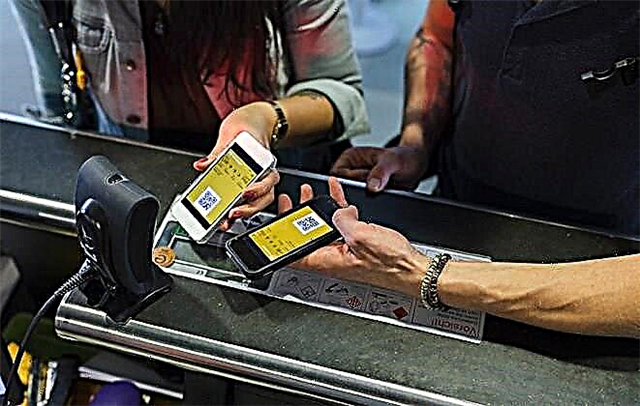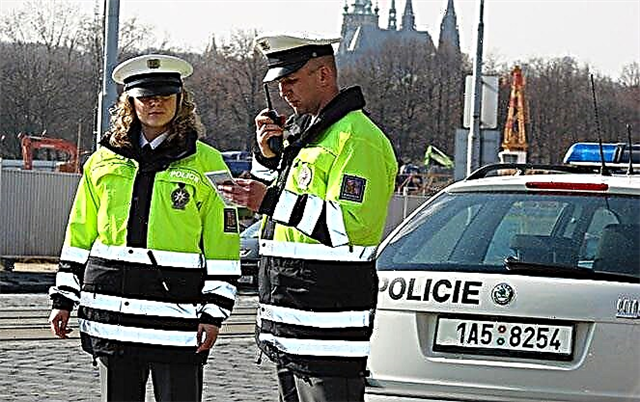Finnish traffic rules are not too different from those in the Russian Federation. However, significant fines are issued for violations here. Therefore, if you decide to go on a trip with your own car, it is better to familiarize yourself with traffic rules in Finland in advance in order to avoid unnecessary problems. Both the driver and the vehicle must be ready for the trip.

Requirements for the car and driver
If we talk about the driver of a vehicle, then, first of all, he must have a valid driver's license. In addition, it is imperative that there must be documents for the car and, possibly, additional papers - for example, a power of attorney to drive a car, if the driver is not its owner. If there are children or animals in the car, they must also have appropriate papers.
Take care of the necessary equipment: there must be an emergency stop sign and a reflective vest. Children must be seated in age-appropriate seats, and all passengers and the driver must be wearing seat belts.
Inspecting a foreigner's car before entering the country, the Finns will not pay attention to rust, scratches and even dents on the car, will not be interested in the year of its release and in which country it was produced. However, if scratches or cracks are found on the windshield, such a car will not be allowed to be used on Finnish roads until the defect is repaired.
But the most important thing is that your vehicle should not pose a threat to people and the environment. For this reason, it is necessary to check in advance that no fuel leaks in it, that the headlights, brakes, and steering are in good working order.
Package of documents
When setting off on the road, the driver must take the following documents with him:
- Foreign passport with a valid visa. The document must be valid for at least another 90 days after the end of the trip in Finland.
- Driver's license. It should be noted that the Finnish border guards are quite satisfied with the Russian rights. However, a temporary permit to drive a car, which is issued in lieu of the confiscated rights, is not valid in Finland.
- Certificate of registration of a technical device. The certificate of passing the technical inspection is not needed.
- "Green Card" is a driver's civil liability policy in case of road transport travel in the Schengen area. Without this document, you will not be able to enter the Schengen area. It is better to purchase a policy in advance, but this can be done on the way to the border in one of the offices of insurance companies, of which there are plenty. The most disadvantageous option is to purchase a Green Card from a border guard: if you don’t have a policy, in this case it will cost you about 100 euros.
- Power of attorney for a car (for those who travel in someone else's vehicle).
If you are traveling to Finland with children, young travelers must also have passports and valid visas. If you are not a parent of a child, you need to have a notarized power of attorney from his parents, which allows you to take the minor out of the Russian Federation.
To bring a pet into Finland, you need to have a veterinary passport with vaccinations and a certificate of breeding value for it.
Vehicle equipment
As noted above, the mandatory vehicle equipment includes an emergency stop sign and a reflective vest. The driver or passenger must wear a vest if they leave the car on the road at night. The absence of these items does not mean that you will not be allowed into the country, however, a fine may be imposed for this.

It is forbidden to use or even store a radar detector in a car. Storage means the presence of a radar detector in the vehicle even when it is turned off. Violation of this rule will result in a fine and confiscation of the device.
A first aid kit and fire extinguisher are optional in Finland. However, for your own safety, it is advisable to have these items.
In addition to a full tank, a duty-free import of another 10 liters of gasoline in a canister is allowed.
Requirements for the technical condition of the machine
If everything is in order with the documentation, the car has the necessary equipment, you can proceed to the analysis of the vehicle itself. Many car enthusiasts are interested in whether rear window tinting is allowed in Finland. Yes, the rear windows can be tinted, but cars with completely darkened windows will not be allowed into the country.
The windscreen and front side windows must be fully visible - the light transmission of the windshield must not be less than 75%, and the front side windows must not be less than 70%.
The Finnish traffic police strictly monitors the condition of the tires. From December 1 to March 1, when driving in Finland, only studded tires are allowed, during the rest of the year - non-studded tires. The tread height on studded tires must be at least 3 mm.
Since studded tires have a destructive effect on the road surface, they are only permitted for use in winter and in extreme weather conditions. Note that a tire sign warning of the driver's use of studded tires is not required in Finland. It is prohibited to use studded and non-studded rubber at the same time.
Basic traffic rules in Finland
In order to travel in Finland by car, you must cross the border correctly. The Imatra checkpoint is an excellent opportunity for Russian tourists to quickly find themselves on Finnish territory. The checkpoint is located 43 km from the city of Lappeenranta, the distance to Helsinki is 265 km.
If the driver is alone in the car, it is not necessary to get out of the car by driving up to the window of the checkpoint. It is only necessary to turn off the engine and open the rear passenger window. Then you should transfer the documents to the border guard officer, if necessary, fulfill all his requirements and answer questions. Occasionally, the driver may be asked to breathe into the tube to check for alcohol.
The length of the public road network in Finland is 78,162 km, of which 51,016 km are paved. Dirt roads in the country are also of sufficient quality and are quite suitable for a comfortable and safe ride. The length of highways is 863 km.

There are no toll roads in Finland, but they are all in excellent condition and have a high-quality surface. Country roads are no different from urban ones. In winter, the road bed is sprinkled with granite chips, which completely prevents the appearance of puddles and dirt.
E-18 is the best highway in Finland, used by thousands of tourists from St. Petersburg every year. One of its names is Royal Road. It was entrenched due to the fact that for a long time the decrees of kings, dispatches of officials and taxes for the king were carried along it. Two of its sites are even included in the list of museum sites.
For 700 years, the narrow dirt road has turned into a modern highway, along which entire cities have grown. The history of this road can be traced in the Vellamo Museum in Kotka. Today the route connects east and west of Finland, and runs through Norway and Sweden, and continues even into Northern Ireland.
Finnish road signs are everywhere.You can get to the city you need even without a navigator, since there are signs on the highways with the road number, direction of movement, turns, the names of various settlements and even objects located inside them.
There are practically no police on the roads, only sometimes its officers carry out anti-alcohol raids.
All roads are equipped with webcams, so when a violation is recorded, traffic police officers arrive at the scene immediately.
Photos taken in digital format are saved in the device's memory. The picture shows the vehicle, license plates, date, time and the driver, the passenger is darkened. If the offender's car is registered in another state, the picture is sent to the border, where the driver will have to pay the issued fine when leaving the country.
The main traffic rules in Finland include:
- the obligation to wear seat belts;
- use of low beam at any time of the day;
- using fog lights exclusively during fog, rain or snow;
- peculiarities of driving at a roundabout: drivers who enter the roundabout are obliged to let those who are already moving around the roundabout. Leaving a roundabout, you need to turn on the turn signal;
- ban on using a mobile phone while driving (you can use a hands-free headset).
In addition, the driver is obliged to skip buses that leave the stop.
The allowed blood alcohol content is 0.5 ppm.
Finland has a special road sign "Caution, moose". These large animals often appear on the roadway. It is quite difficult to predict their behavior: moose walk in groups, and if you overtook one animal, several more may appear after it.
To avoid a collision, you need to be careful, reduce the speed in places where moose may appear, which is what a road sign warns about. If the animal is out on the road, you cannot signal - it is better to wait until the elk clears the way, or carefully go around it. In the event of a collision, be sure to call the emergency number - 112.
There are quite a few free parking lots in Finland. However, many of them can be parked for a strictly limited time - there is always a sign nearby indicating the permissible number of minutes or hours. In this case, you will have to purchase a parking clock (its cost ranges from 1 to 3 euros), set the parking start time on it and place it under the windshield of your car. You should return to the car no later than the designated time.
What can you get a fine for?

If you break the traffic rules, you can be fined in Finland, just like in any other country. The car fines are quite high here, so it is better to travel around the country without violations. However, it is not always possible to foresee everything, so you should know what to expect if you break the rules:
- For a radar detector installed on a car - 120 euros + confiscation of the device.
- If the seat belt is not fastened - 35 euros per person
- Passed at a red traffic light - 60 euros.
- The fines for speed violations are the most significant - the minimum amount is 120 euros. If you speed up too much and do it too often, next time you may be denied a visa or revoked your driver's license.
- For non-included dipped beam - 50 euros.
- For ignoring traffic sign regulations - 70 euros.
- Using a mobile phone while driving without a headset will cost 50 euros.
- For incorrect parking, they charge from 15 to 50 euros (the amount depends on the region).
- For an incorrect and dangerous overtaking - 85 euros.
- Turn signal not included - 50 euros.
- The child does not sit in a special chair - 120 euros.
There are two types of fines in Finland: fixed (Rikesakko) and daily (Päiväsakko). In the second case, their number is determined by the severity of the violation, and the size - by the level of the violator's income. For example, you can get up to 32 fine per day for speeding.
Payment of the fine must be made within a month and only through the bank.
What are the speed limits
Unless road signs indicate otherwise, the permitted speed of the vehicle in settlements is no more than 50 km / h, outside - 80 km / h.
In winter, a lower speed limit is set. The maximum speed is reduced from 100 km / h to 80 km / h.

On motorways, where a speed of 120 km / h is allowed, in winter you can only accelerate to 100 km / h. On some sections of the road, there are electronic light boards, which indicate changes in the speed limit, depending on weather conditions.
What to do in case of an accident
Any car enthusiast can become a participant in a traffic accident. Therefore, every tourist who plans a trip to Finland by car should find out the rules for accounting for accidents in this country and find out how to behave in such a situation.
- Stop the vehicle and turn on the hazard lights. Evacuate passengers if required. Install a warning triangle.
- If there are victims, provide first aid, call an ambulance.
- Be sure to return to the accident site. Do not move objects related to the incident.
- Write down the names and phone numbers of witnesses and eyewitnesses to the accident.
- Record the make and license plate of the vehicle with which the collision occurred.
- Call the police. You are required to present documents only to police officers.
- If this is your car, report an accident by the phone number indicated in the "Green Card", if rented - call the numbers written in the lease agreement.
- Before the arrival of the police, exchange insurance details with a second driver.
- Be sure to take part in drawing up the scheme and protocol of the traffic accident together with the police officer.
- Make a note of the police officer.
- Obtain a certificate of participation in an accident from a police officer. Remember to check that the damage record for your vehicle is correct.
If the car was rented, be sure to present at the rental point a certificate of participation in an accident and a completed notification of a traffic accident.
Outcomes
The quality of the road surface in Finland allows you to travel comfortably around the country by car. Finnish traffic rules are very similar to Russian ones, and the biggest difference is the adherence to principles of local traffic police officers: if traffic rules are violated, it will not be possible to avoid fines, and they are very significant here. However, rules such as fixing with a seat belt, using a mobile headset while driving and dipped beam during the day, as well as many others, are not difficult to follow. The main thing is to carefully follow the road signs, of which there are a lot in Finland, to observe the speed limit, not to forget about the moose that can jump out on the road, and to do everything possible to prevent accidents.











